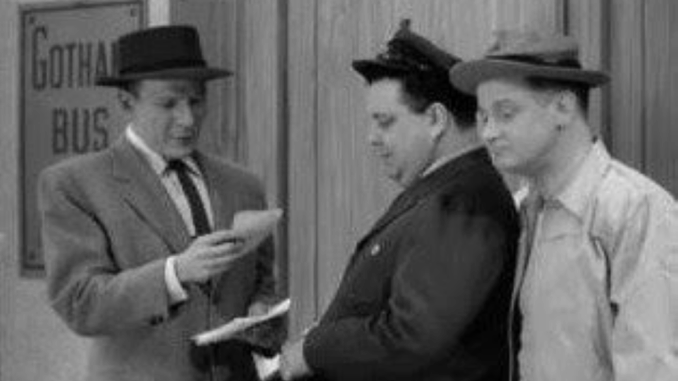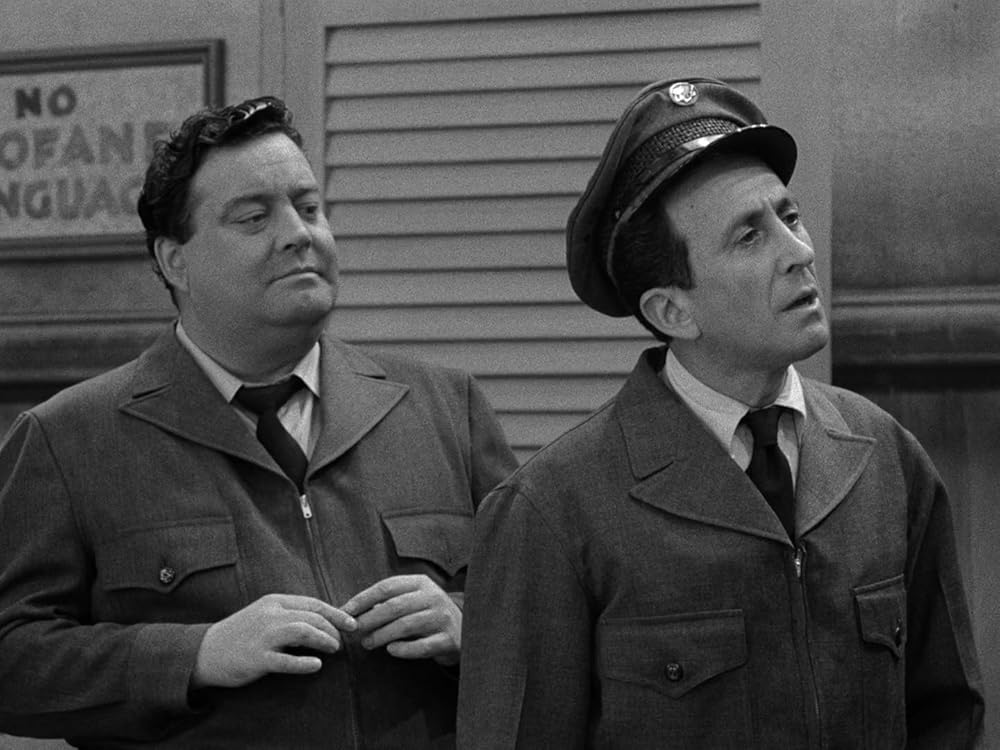
When television historians discuss The Honeymooners, the spotlight naturally falls on Jackie Gleason, Art Carney, Audrey Meadows, and Joyce Randolph. Yet behind these stars stood a dependable group of supporting actors who gave the show depth, consistency, and balance. Among the most important of these were Frank Marth and George O. Petrie — two performers who rarely got their due but were absolutely essential to the success of Gleason’s productions.
Frank Marth, tall, commanding, and equipped with a resonant voice, was the kind of actor directors relied on when they needed authority. On The Honeymooners, he often appeared as policemen, stern bosses at the Gotham Bus Company, or officials whose rigid seriousness provided the perfect counterpoint to Ralph Kramden’s bluster. Gleason’s comedy often hinged on Ralph’s bravado colliding with immovable obstacles, and Marth excelled at embodying those obstacles. His expressions could stop Ralph in his tracks, and his steady delivery gave Gleason the setups he needed to explode with comic frustration.
But Marth was far more than a straight man. His versatility allowed him to shift between intimidating figures and more comedic roles, lending the series a broader range of tones. In live television, where performers had little margin for error, Marth’s calm authority steadied scenes that might otherwise have unraveled under Gleason’s unpredictable style.

George O. Petrie, no relation to fellow character actor George Petrie, offered a different kind of strength. While less imposing physically, he brought credibility and relatability to his roles. Petrie frequently appeared as landlords, coworkers, or low-level bureaucrats, characters who helped anchor the show’s farcical situations in a recognizable slice of reality. His unassuming presence was invaluable: while Gleason and Carney generated fireworks, Petrie grounded the world, ensuring audiences could believe in the situations no matter how outrageous Ralph’s schemes became.
What both men shared was a quality that Gleason prized above all else — dependability. Live television in the 1950s was unforgiving. There were no retakes, and a single missed cue could derail an entire sketch. Gleason, known for improvisation and last-minute changes, needed actors who could adapt on the fly while maintaining composure. Marth and Petrie delivered time and again, hitting their marks, staying in character, and feeding Gleason the momentum he needed.
Neither man sought the spotlight, nor did they attempt to compete with Gleason’s towering persona. Instead, they embraced the tradition of the character actor, playing many roles with professionalism and humility. For audiences, their faces became familiar, even if their names didn’t. That familiarity built a sense of continuity within the world of The Honeymooners, allowing viewers to lose themselves in the comedy without distraction.
Their careers extended far beyond Gleason’s orbit. Marth appeared in a wide range of television programs, from dramas like Perry Mason to later shows in the 1970s and 1980s. George O. Petrie also built a steady résumé across decades, proving himself equally adept in both television and film. They were working actors in the truest sense — never the marquee names, but always the ones producers knew they could count on.
Together, Frank Marth and George O. Petrie embodied the invisible scaffolding of The Honeymooners. They allowed the stars to shine, carried scenes when needed, and kept the comedy sharp and believable. While they may never have achieved household-name status, their contributions endure every time an audience laughs at Ralph Kramden’s antics. In many ways, they remind us that classic television wasn’t built by stars alone, but by the steady hands of supporting players who made it all possible.
